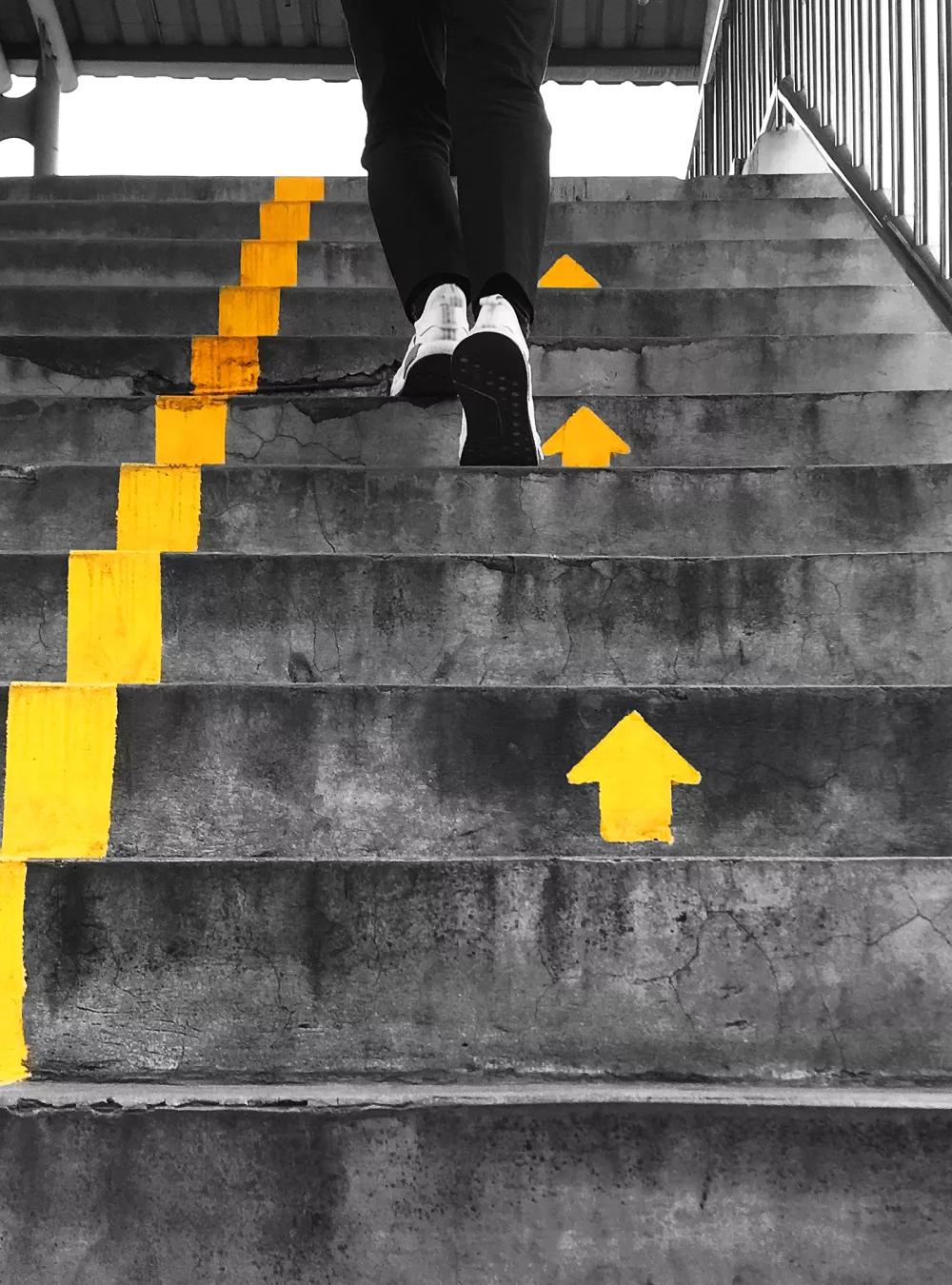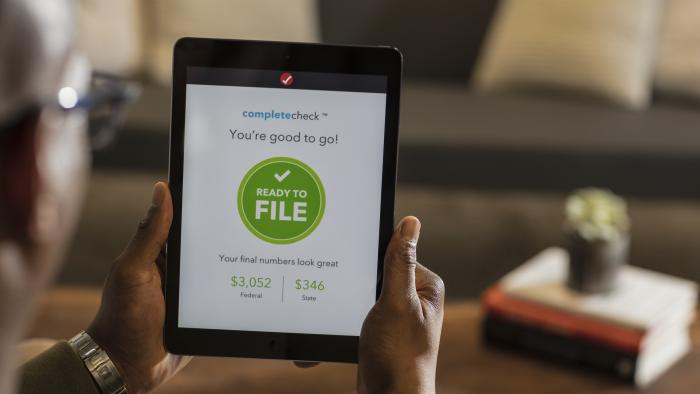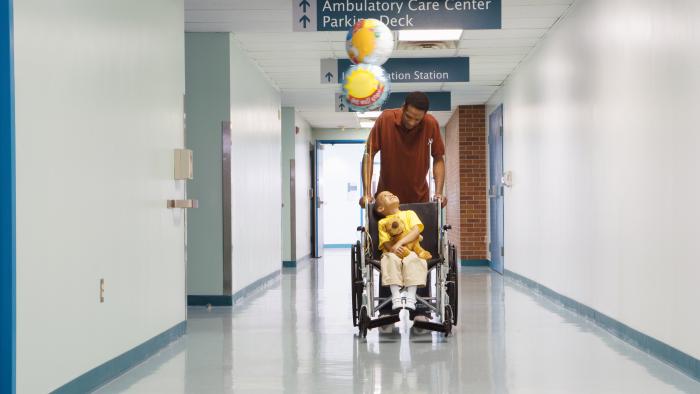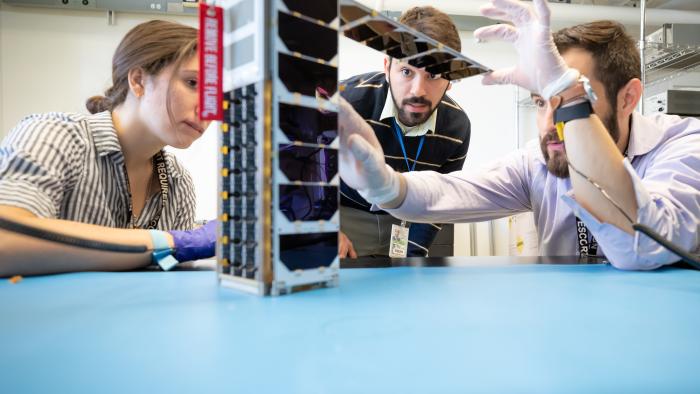
MITRE Nudge Research
Nudges help people make better decisions by changing how choices are presented.
Did you know placing healthier food at eye level in grocery stores makes it likelier people will pick those items? That kind of behavioral prompt is called a “nudge.”
Specifically, nudges act as inexpensive, low-risk decision prompts and choice-framing strategies to encourage desired actions—without limiting options.
How do you know which nudge might work? That's where the MITRE Nudge Lab comes in. It's a resource, created within our MITRE independent research program, that helps our staff and sponsors guide people to make better decisions. Our multidisciplinary team members work as “choice architects” to identify and evaluate which nudge works best for a given context.
The science of nudging arose from the work of Richard Thaler and Cass Sunstein, whose 2008 book, Nudge: Improving Decisions About Health, Wealth, and Happiness, brought the concept to a wide audience. Thaler later won a Nobel Memorial Prize in Economic Sciences for his work in behavioral economics, including nudge theory.
Nudges aren’t appropriate for every context. But, when appropriate, they can be powerful, as MITRE’s Nudge Lab demonstrates.
Nudge Studies in Action

Pennsylvania Department of Revenue
The goal: increased voluntary compliance for business taxpayers through specially crafted communications. The nudge interventions significantly increased the number of business owners who responded and the amount of delinquency they paid. The Pennsylvania Department of Revenue study was awarded a 2020 Public Sector Innovation Award, presented by FCW, GCN, Washington Technology and Defense Systems. Further details of the study are available in the Journal of Behavioral Public Administration

Boston Children's Hospital
The goal: empower patients and caregivers to prepare for discharge, enabling kids to return home faster without affecting their health outcomes. The nudge intervention successfully empowered patients and caregivers to prepare for discharge in advance. Further details of the study are available in the Journal of Patient Experience

A Major American Automotive Company
The goal: improved consumer compliance rates for vehicle safety recalls, accomplished through MITRE’s partnership with a large American automotive manufacturer.
These are just a few examples of how MITRE's Nudge Lab is moving the world in the right direction—one small decision at a time. Additionally, throughout the COVID-19 pandemic, MITRE Nudge Lab team conducted studies and provided “nudges” designed to increase small business participation in tax relief programs, improve hygiene (e.g., mask wearing, handwashing, physical distancing) compliance, and inspire people to help restock our nation’s increasingly stressed food pantries.
Want to know more about the Nudge Lab and how a nudge works? Interested in working with us on a nudge study? Find out how below.

The goal: increased voluntary compliance for business taxpayers through specially crafted communications. The nudge interventions significantly increased the number of business owners who responded and the amount of delinquency they paid. The Pennsylvania Department of Revenue study was awarded a 2020 Public Sector Innovation Award, presented by FCW, GCN, Washington Technology and Defense Systems. Further details of the study are available in the Journal of Behavioral Public Administration

The goal: empower patients and caregivers to prepare for discharge, enabling kids to return home faster without affecting their health outcomes. The nudge intervention successfully empowered patients and caregivers to prepare for discharge in advance. Further details of the study are available in the Journal of Patient Experience

The goal: improved consumer compliance rates for vehicle safety recalls, accomplished through MITRE’s partnership with a large American automotive manufacturer.
These are just a few examples of how MITRE's Nudge Lab is moving the world in the right direction—one small decision at a time. Additionally, throughout the COVID-19 pandemic, MITRE Nudge Lab team conducted studies and provided “nudges” designed to increase small business participation in tax relief programs, improve hygiene (e.g., mask wearing, handwashing, physical distancing) compliance, and inspire people to help restock our nation’s increasingly stressed food pantries.
Want to know more about the Nudge Lab and how a nudge works? Interested in working with us on a nudge study? Find out how below.
Nudge FAQs
When can you use a nudge?
A nudge is the correct tool when you want to change how a choice is presented in a context where people are making quick—reflexive, intuitive—“gut reaction” decisions.
Are nudges new?
Trying to influence behavior with a nudge is not new. What is new is the application of nudges to the field of public policy through evidence-based development and implementation. Many governments around the world are beginning to establish nudge units that apply behavioral insights to analyze obstacles and then design nudges to overcome them.
How are nudges used?
Nudges can solve all sorts of problems that governments and businesses consider important. Traditional areas where behavioral insights can play a strong role include:
- Determining access to programs
- Presenting information to the public
- Structuring choices within programs
- Designing incentives
Nudging is a compelling tool because it provides a low-cost, low-risk intervention strategy with tangible, measurable gains.
What is not an example of a nudge?
Certain behavioral interventions don’t qualify as nudges, including persuasion (which revolves around reflective decision-making, rather than “gut reactions”); education; legislation; and enforcement. For example, behavior changes such as wearing seat belts must be reinforced through legislation and enforcement to improve public safety.
How long does a MITRE nudge study take?
While no two studies are exactly alike, the total length of a nudge study is approximately 6-12 months, divided into two phases.
Phase 1 consists of exploratory research to understand the problem and the desired behavior.
Phase 2 focuses on proof-of-concept field experiments (randomized controlled trials) to test the nudge(s). The field experiments take time to execute (4-6 months).
How do you know when a nudge worked?
The MITRE Nudge Lab takes a scientific approach to conducting nudge studies. All nudge interventions are tested with proof-of-concept field experiments. The goal is to make a small change with a disproportionate impact. Our team will provide evidence (or the lack thereof) of a nudge’s impact.
The team discourages scaling a nudge up until there’s evidence it works at a smaller scale. Sometimes refining a nudge is an iterative process.
To explore whether a Nudge Study is a good option for your project, connect with us: Contact the Nudge Lab.
